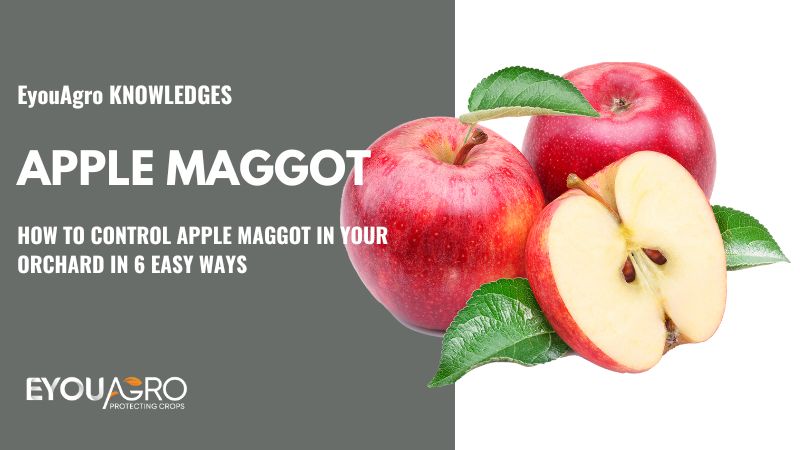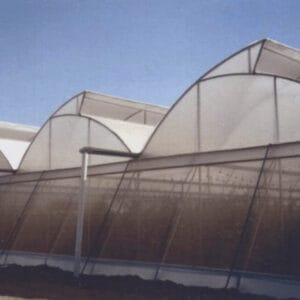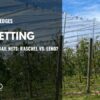Throughout the apple growing season, there will be many challenges with pests and diseases that can strike your orchard. One of the biggest problems apple growers face is apple maggot.
Apples that are affected by this pest fail to meet their full potential and are less valuable to growers. According to the University of Hampshire If left unchecked, the apple maggot can infect 100% of a season’s apple crop.
Fortunately, over time, apple and pear growers have discovered different ways of controlling this pest. Here are 6 ways of controlling Apple Maggot in your Orchard, but first let see what is an apple maggot.
What is Apple Maggot?
Apple maggot fly, also called orchard maggot, is a type of fruit fly. The adult apple maggot is about 1/4 inch long, grayish-brown, and has a short snout (proboscis). The maggot has:
- Translucent wings, darkly marked, and there is a prominent white area where the thorax meets the abdomen.
- White stripes on the abdomen- three for male and four for female
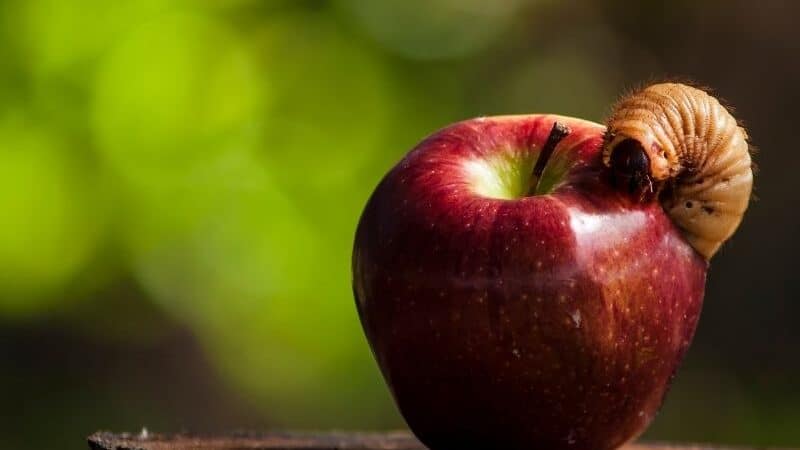
Besides attacking apples, the apple maggot also attacks
- Pears
- Crabapples
- Hawthorn
- Mountain ash fruit in orchards
The larvae burrow into the fruit, leaving thin brownish threadlike trails behind them. The Apple maggot causes the following damages:
- The fruits become pitted and misshapen
- The hole created by the female as it lays eggs forms a tiny spot
- The pulps break down, discolors and start to rot
How to Control Apple Maggots
When you notice that your apples are being attacked by apple maggots, take action immediately. You can use several different methods to control these pests, and it is important to choose one quickly because they can do a lot of damage in a short time.
- Monitor Your Apple and Pear Trees for Infestation
The first step in controlling apple maggots is to keep watch. Apple maggot fly is active in the spring, between mid-April and mid-June.
So during this time, you inspect your apple trees regularly for signs of infestation:
- Check all branches at least twice a week.
- Look for eggs on the undersides of leaves during the spring as well as larvae in June and July.
- Monitor your apple trees for signs such as leaves that drop prematurely
- Inspect for distorted, discolored leaves.
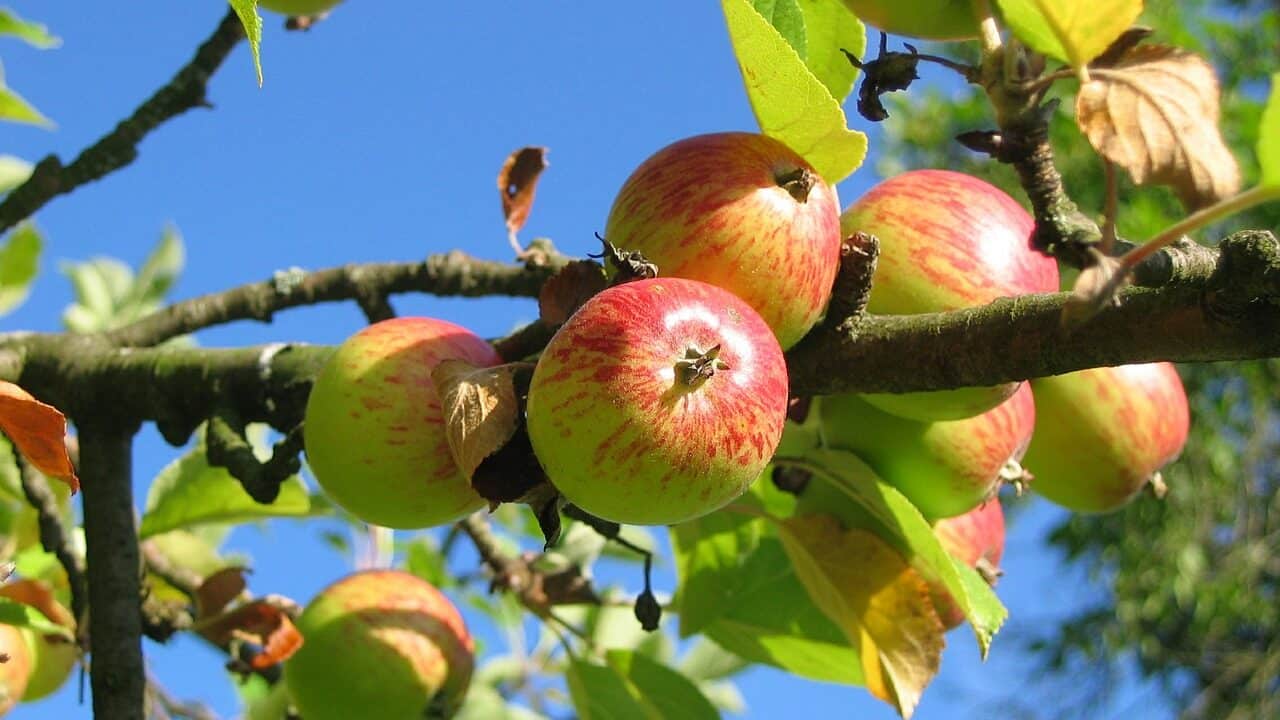
Sanitize Your Orchard
Keep your trees healthy, and you should be able to manage apple maggot fly numbers with minimal impact on your harvest.
The flies are attracted to rotting apples on the ground around an orchard, as well as fresh apples on trees (often caused by hail). These flies lay eggs in fallen apples that have been left on the ground for months. Because of this, it is important to pick up any fallen fruit from your trees and remove them from your farm as soon as possible after they fall.
Removing fallen fruit can reduce apple maggot fly populations by over 50 percent because they don’t have access to food or shelter. The most effective way to remove fallen fruit is with a tarp (link) or sheet underneath your trees. This will help you collect the fruit while it’s still fresh, making it easier to dispose of properly.
Make Use of Natural Predators
Natural Predators are one of the best ways to get rid of apple maggot fly. Most insect pests come into touch with the soil at some point throughout their life cycle, especially when they are pupae or larvae. This predator does not harm animals or people and they only attack apple maggot fly because they are their prey.
Some of the natural predators include:
- Chickadees
- Lacewings
- Rove and ground beetle
- Parasitoids
Trap the Apple Maggot Fly
If you want to keep the apple maggot fly from laying eggs, put out traps that attract male flies. This will distract them from laying eggs on your apple or pear trees.
Here are some good examples of the traps you can use:
- Yellow panel – These appear and smell like insect honeydew, which is what the fly eats.
- Red balls – look like apples and are designed to attract mature mating insects.
- Ladd – A bright yellow plastic panel with red hemispheres attached to the center.
- Homemade -This is a tangle trap-coated.The Delicious and Gala apples attract and capture apple maggot flies.
Install Insect Netting
The use of insect netting can help keep insects from reaching your trees and eating their fruit. The commercial orchardists have found it to be an effective way to combat apple maggot infestations.
The insect netting is
- Low-cost
- Made of high-quality PE material
- Made of polypropylene (PP)
- Lightweight
- Easy to apply
If you are growing several different fruit fruits species in one orchard, you may need to move the nets around depending on insect activity and variety susceptibility.
Spray Your Orchard with Insecticides
Lastly, you can spray your apple and pear trees to get rid of the adult apple maggots. Here are some organic sprays, you can use:
Nematodes
Spray on the apple tree’s trunk or water into the soil around it. It kills insects such as apple maggot pupae. It is effective against insect pests and not beneficial insects.
Kaolin Clay
Because flies taste with their feet, kaolin clay spray generates a barrier film that conceals the host tree. Use the spray every two weeks and after each heavy rain to maintain the barrier film.
Dormant Oil
This is a refined, natural, and environmentally safe oil spray. You can use it in early spring to suffocate overwintering eggs and insects. Apply before the leaves or flowers show indications of breaking dormancy.
Conclusion
Apple maggots cause serious damage to apple trees and their fruit. Monitor your orchard for the maggot, ensure sanitation, apply pesticides, Insect Netting, natural predators, and traps to control apple maggot.
Eyouagro Insect netting product is a mesh barrier used to protect your fruit from various pests and harmful insects that damage your fruits. It is an ideal and effective protective measure for apple growers engaged in fruit tree planting and cultivation to effectively protect apples from pests and insects.
Please get in touch with us at info@eyouagro.com and select the best netting protection for your apple or pear orchard or visit us at www.eyouagro.com to complete your orders.

